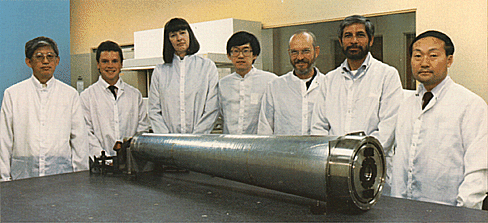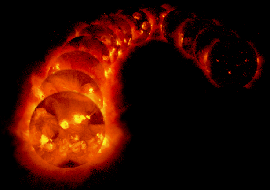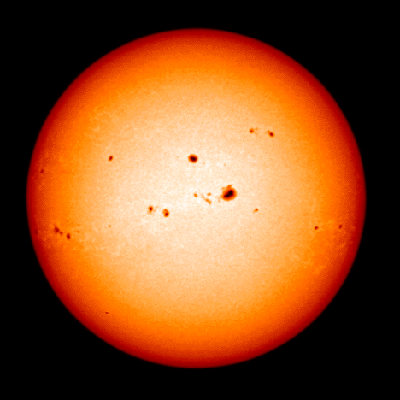|

|
|
Launching Yohkoh
|
|
Where do they come from?
The images used in this activity are all from a Japanese satellite called Yohkoh ("sunbeam"),
built in cooperation with NASA. Yokoh is designed to give scientists fantastic, detailed images of the sun at the
right wavelengths for different kinds of light.
The visible light images came from a camera on board Yohkoh. They are made daily for comparison purposes. |
|
| |
Taking an x-ray picture
Yohkoh's Soft X-ray Telescope (SXT), shown at right, produces the data from which our x-ray images
are made. The telescope's mirrors make an x-ray picture of the sun on a flat detector, which is divided into tile-like
pixels. Each image is sent back to
scientists as a table of numbers that tell how many x-rays landed in each pixel. |
|

|
|
The Soft X-ray Telescope, or SXT
|
|
|
| |
|

|
|
Image series from solar minimum to
solar maximum
|
|
Making the daily images
To make each day's image, several images are added together. Each daily image clearly shows the real changes in
the Sun since the previous day's image. In this way, the effect of an entire solar cycle can be made visible. |
|
What Do They Show Us?
Visible light images, also called "white light" images, show us the sun's surface,
or photosphere, at about 6000
degrees Kelvin. Dark sunspots appear
where magnetic fields are very strong. Images from the peak of a solar activity cycle have (by definition) the
most sunspots. |
 |
|
 |
SXT's X-ray images capture high-energy solar radiation that is normally invisible to the
human eye (like the light used to make medical x-rays). The X-ray view is a snapshot of the solar corona, about
1000 to 1,000,000 km above the surface, at temperatures of millions of degrees, rather than the "mere"
6,000 degrees of the photosphere. |
|
|
ęCopyright
2001 Regents of the University of California.
|
|